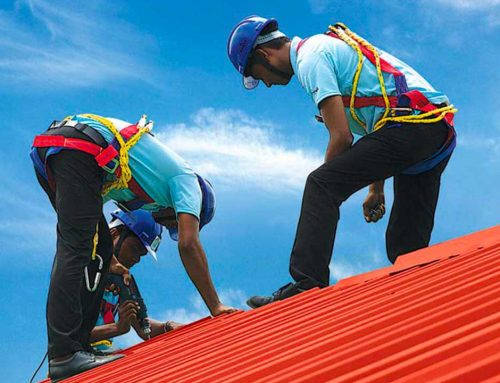Roofing experts and manufacturers will tell you that lightning protection components on aluminium or galvanized steel roof should be of a highly conductive aluminium alloy. The alloy should also be galvanically compatible for use in lightning protection systems.
For the layman, it is natural to worry about lightning risks when installing a metal roof. Questions arise as to whether or not the use of metal roofing increases the risk of a lightning strike. However, the materials used in roof construction do not influence the risk of a lightning strike. It is a studied fact that a lightning strike has much to do with the size and height of any structure rather than the material used.
Probability and Consequence
We can determine the probability of a lightning strike by several factors:
- If the topography in the area is on a mountain top or hill, the possibility of lightning is higher.
- Next, come the size and height of the subject structure. A slender or tall building or one covering more ground area is more likely to be struck than a short or small building. 3. The geographic region, and the frequency and severity of thunderstorm activity.
- The construction materials used for both framing and roof coverings also matter If the materials are (electrically) conductive, the threat of fire and explosion are both reduced.
Metal roofing is an electrical conductor and is also non-combustible. Thus it can reduce the risks associated with its use and behaviour during a lightning event.
Tips and building strategies to keep in mind
Now that you have a fair idea of what factors increase the chances of a lightning strike, you can plan your site location and building strategies accordingly.
Topography: High altitude, higher topography attracts lightning. While considering a property, it is better to avoid the high points – will be more prone to lightning strikes than those in the low-lands.
Size and height: Steeple like and slender, taller buildings are more likely to be struck. However, it doesn’t hit the structures as long as your metal roof has a proper earthing line tied to the ground with a lightning rod like any other roof, you can rest your worries.
Proximity to other geographical features:
Taller structures or trees act as protectors. Lightning tends to get attracted to tall buildings, or natural topography, and thus your building stands safe.
Metal is a good conductor, spreads the force of the electricity out, rather than concentrating it all in one place. Therefore, it diffuses the full impact of the strike. The earthing rod conducts the electricity almost instantly through the conductive material(s) to the ground. Any building that uses metal and other fire-resistant materials can withstand lightning strikes better than other building materials.






Leave A Comment